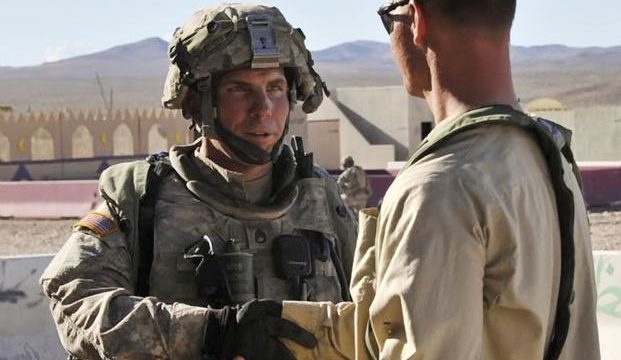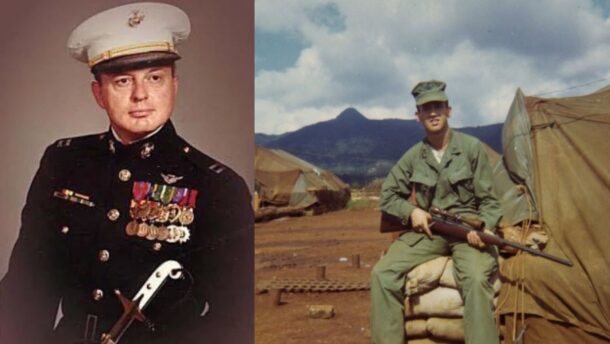
This article originally appeared on Military.com on 4 Jan 2021.
As the war in Afghanistan winds down and Taliban fighters, with American blood on their hands, are released — none of whom have been incarcerated for more than 18 years, and 150 of whom have committed horrific crimes yet are being released from death row — former U.S. Army Staff Sgt. Robert Bales stands to be one of the last warriors left in prison.
In Bales’ case, what is most disturbing is that, prior to any professional investigation, sanity board results, vetting of witnesses, forensic examinations, etc., then-Secretary of Defense Leon Panetta announced the United States would seek the “death penalty” and then-President Barack Obama instructed the military to “prosecute” (not investigate) the case aggressively.
And that is exactly what the Army’s prosecutors did, based solely on the Afghans’ allegation that Bales killed 16 civilians, including women and children.
It is important to note that, according to Bales, he conducted a preemptive strike against Taliban fighters who had previously harmed U.S. personnel and who were coordinating another attack. “My count is 20,” he said, referring to those he killed.
So, who exactly did Bales kill — civilians, enemy combatants, or both? We will never know. Why?
Right after the incident, the Afghan Army’s criminal investigation division attempted to investigate and came under fire. One Afghan soldier was killed. Once they gained access, but before they were able to take photos and write their woefully inadequate one-and-a-half-page report, all the bodies had been removed and buried and the families had cleaned almost everything out of the rooms.
No one examined the bodies, conducted autopsies or performed forensic analysis to confirm that the Afghans’ allegations were accurate, as opposed to what might very well have been another Taliban-enhanced incident generated to appear worse for political motives — as we have seen done before.
Instead, the U.S. government rushed to pay $848,485 in solatium to injured victims and the family of the dead while pursuing the death penalty against Bales.
The lead prosecutor claimed they “were able to get DNA samples from scrapings off the walls, as well as from some of the living family members of the deceased.” However, for some reason, they never cross-referenced any of that evidence against the U.S. government database to determine how many were enemy combatants.
Would it have mattered if any of those Bales killed were enemy combatants? Yes.
As tragic as any civilian death is in war, the alleged “civilians” Bales killed might have been considered “collateral damage,” had he harmed them while engaging enemy combatants. This is not dissimilar to how the U.S. generally addresses civilian deaths in its drone strikes, or specifically in the situation where U.S. forces dropped bombs on the “Haska Meyna” wedding party in Afghanistan, killing 39 women and children to take out one insurgent “target of opportunity.”
Why was Bales’ case handled differently? Why did the prosecutors threaten him with the death penalty to coerce and expedite an inaccurate and incomplete guilty plea?
One main reason is that the media reports about Bales’ incident shocked Americans and stoked increased Afghan animosity toward the U.S., especially on top of the reported incidents of U.S. personnel burning Qurans and urinating on dead Taliban fighters. The immense amount of pressure at home and abroad was hampering Obama’s attempts to appease then-Afghan President Hamid Karzai and sign the Strategic Partnership Agreement between Afghanistan and the United States. Politically, there was a lot at stake, and Bales’ rights were not going to get in the way.
The prosecutors were successful in getting just what their senior leadership wanted. With intense pressure coming down from the president, the secretary of defense, the media, two outraged nations, the prosecution and coached witnesses at Bales’ Article 32 hearing — some of whom an expert identified as having ties to Taliban and those who used improvised explosive devices gainst U.S. service members — Bales’ wife and his own defense attorney convinced him to plead guilty in order to avoid the death penalty.
As a result, the prosecution did not have to prove the government’s case in a trial with due process, evidence, witnesses, etc. Instead, the trial went straight to sentencing after the contrived guilty plea.
During sentencing, the prosecution introduced, and misrepresented, its well-coached Afghan witnesses, who pleaded with the jury that they were innocent farmers, when, in fact, they were not. One had a Taliban tattoo, a second was a coalition detainee at an Afghan detention facility, and others had left their fingerprints and DNA on IEDs designed to kill and wound Americans.
In other words, Army prosecutors befriended and teamed up with enemy combatants to testify against an American service member while our nation was at war — possibly a first in U.S. history.
And it was not an accident. The prosecutors actually worked with the State Department to fly these enemy combatants from Afghanistan to America using fake Social Security numbers, false visas and aliases, and stated the witnesses were “government contractors.” They then placed these terrorists on Delta Airlines from Atlanta, Georgia, to Seattle, Washington, unbeknownst to the U.S. civilian passengers. All this was proven by the Army’s release of records pursuant to the Freedom of Information Act, after Bales was sent to prison.
Many who have reviewed Bales’ actions believe, regardless of his stated motives and otherwise stellar career, that he just must have “snapped” or “gone crazy.” Bales had endured a traumatic brain injury and post-traumatic stress from multiple combat engagements and 10 IED blasts, and had observed fellow warriors being wounded and killed.
The prosecution asserted that was not the case. They claim Bales’ “mens rea” (mindset/intent for murder) was appropriately evaluated. However, while the prosecution was aggressively pursuing the death penalty, neither medical, psychiatric, psychological, nor legal professionals evaluated his “mens rea” on the night in question to determine whether he was laboring under the debilitating effects of the malaria drug mefloquine.
Why is mefloquine so important in Bales’ case?
In 2002, three senior enlisted Special Forces soldiers, upon returning from combat tours in Afghanistan, were charged with murdering their wives. Two committed suicide after the murders. All three had been ordered to take “mefloquine.” Over the years, the manufacturer of the drug, Hoffmann-La Roche, has included increasingly troublesome side effects on its labeling, and warns about “aggression, paranoia, psychosis, hallucinations and suicidal thinking.” Those with TBIs and PTS, such as Bales, are more prone to being affected.
However, the prosecutors did not, and still do not, want to acknowledge that the Army gave Bales mefloquine, as was witnessed by a fellow soldier, Gregory Rayho. They do not want to acknowledge that two world premier mefloquine experts, Dr. Remington Nevin and Dr. Stephen Stahl, after interviewing Bales, confirmed, to a medical certainty, that he was unquestionably laboring under the effects of “mefloquine intoxication.” They also ignore the fact that the Army all but stopped administering mefloquine to its soldiers right after Bales’ incident, a clear indication that it had grave concerns regarding how he was affected.
Had the prosecution, as they had sworn to do, honored Bales’ rights, properly assessed and evaluated the hard evidence — or lack thereof — and constitutionally disclosed to the defense and to the sanity (competency) board the evidence of “mefloquine poisoning,” and to the jury the terrorist affiliations of their witnesses, the landscape of the proceedings would have changed dramatically to serve the truth and to observe the Constitution.
Bales’ attorney, John Maher, addresses all of the challenges associated with the case, in great detail, in his Dec. 7, 2020, filing to the U.S. Court of Appeals for the Tenth Circuit.
Unfortunately, prosecutorial misconduct, similar to that which occurred in Bales’ case, is quite common in cases addressing alleged “crimes in combat,” despite being inconsistent with the ethos of our U.S. armed forces.
Some of the other warriors who have faced similar injustices and must receive executive clemency include:
• 1st Sergeant John Hatley — He was convicted of murder, despite no bodies, no identities, no physical evidence (even though CID scuba divers searched the canal where the bodies were allegedly left) and no missing persons. There was only coached and colluded testimony from spiteful junior soldiers.
• Staff Sergeant Calvin Gibbs — He was convicted of murder, despite zero physical evidence and the fact that Gibbs not being present at the scenes of the alleged crimes. The case was based on the testimony of witnesses who confessed to murder, were encouraged to collude, received deals and were referred to by military justice authorities as known “liars, drug users, and murderers.”
• Sergeant Derrick Miller — He was convicted of murder, despite a lack of forensics, on the coerced testimony from witnesses who initially testified that Miller acted in self-defense, actions which saved the lives of those in his unit.
• Sergeant Michael Williams — He was convicted of murder, after the Army placed him in pretrial confinement for 239 days in Kuwait. Half this time was spent in solitary confinement in an 8’x8′ wooden box surrounded by barbed wire, where he had to urinate and defecate in a water bottle. His confinement made it nearly impossible for him to assist in his own defense.
• MARSOC 3 (USMC Raider Gunnery Sergeants Danny Draher and Josh Negron, and Special Operations Independent Duty Corpsman Chief Petty Officer Eric Gilmet) — They are accused of being responsible for a death in Iraq when security cameras captured the fact that each attempted to avoid a confrontation, acted in self-defense or defense of others, and tried to save the life of the deceased.
To maintain good order and discipline within our armed forces, the president must send a clear and resounding message to its commanders, prosecutors and investigators that our nation will not tolerate our warriors’ rights being violated. Supported by the Constitution, the president must confidently take action to rectify the injustices faced by the eight warriors listed above by dismissing with prejudice the charges, disapproving the findings and sentences, providing full and unconditional pardons, and/or commuting the sentences for those still imprisoned.







